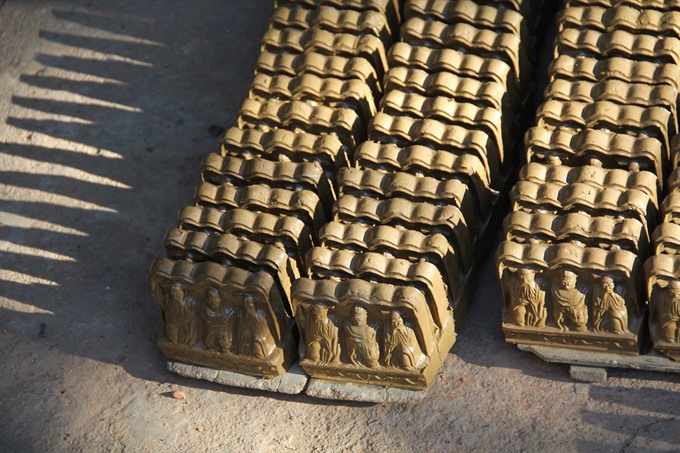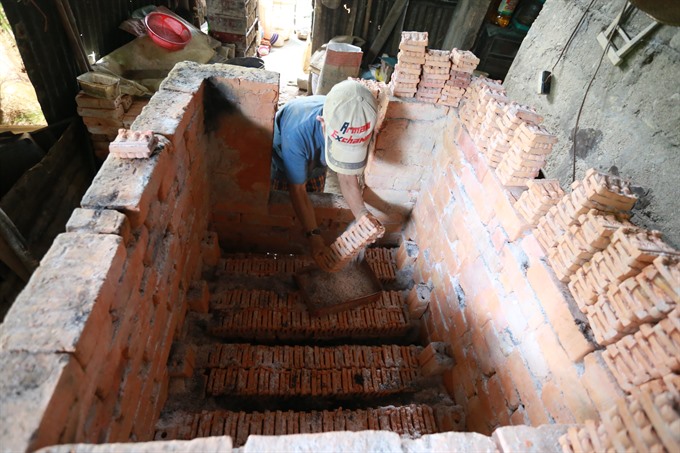 Society
Society

Like many other craft villages around the country, a village making kitchen god statues in Thừa Thiên-Huế Province struggles to survive in the market economy. But one family has set aside economic rules to preserve the craft.
 |
| Clay statues drying in the sun. — VNS Photo Phước Bửu |
by Huê Phong
THỪA THIÊN- HUẾ — Like many other craft villages around the country, a village making kitchen god statues in Thừa Thiên-Huế Province struggles to survive in the market economy. But one family has set aside economic rules to preserve the craft.
The family’s efforts have kept the kilns burning in the village of Địa Linh and given a last hope to the craft’s survival.
The demand for the god statues remains stable because people change them once a year before the Lunar New Year. On the other hand, there is also a change in design to lure customers the way other craft villages have done in producing items unrelated to rituals or traditions.
A stable market segment also means stable prices, making it hard for artisans to make a living from their craft in an economy of rising consumer indices.
The craft requires plentiful labour, both in terms of time and quantity, roping in artisans and family members. According to Võ Văn Nam, one artisan spends three or four months finding and preparing the clay used to make the statues.
To make the statues, clay is first packed into a wooden mold to be shaped, and then the wet earthen statues are dried in the sun. They are then baked in kilns before being painted and sold - at a very cheap price.
Each 10 statues are sold to traders for VND700 (less than one US cent) and almost all the families have therefore quit the job.
Only three facilities remain in the village, which are run by Võ Văn Nam, Võ Văn Đức, and Võ Văn Hay, despite the meagre income. All of them work at home with family members.
“Making these [statues] earns very little, but I do it for the village tradition,” said Đức. “I learned this from my late father, who loved this craft a lot.”
Nam, Đức and Hay are siblings and sons of the late artisan Võ Văn Lạc, who was famous in the village for his strong determination to keep the craft alive despite economic pressure. He also wanted his sons to preserve the tradition.
“This is a new era and people have many jobs, making more money. When many quit the craft or even left the village seeking a new life, my father told us not to let the career of our ancestors go to ruin,” Đức recalled.
According to Đức, Lạc understood that this was a hard job and only kept most of the villagers busy in the final two months of the year, but he insisted that someone must saved the village craft.
His three sons took him seriously and now they are the only family in the village persevering with the craft. Nam, Đức and Hay also run separate facilities and sell at different markets so there is no competition among them.
Each facility produces around 500-700 statues a year for supply to local markets in Huế and neighboring Quảng Bình, Quảng Trị and Đà Nẵng.
The three artisans have also involved their children in the craft, but they are not sure that the third generation will also remain loyal to the craft.
“Vietnamese people always need our product and no industrial process could replace the craft, but I worry that low income will deter the younger generations,” said Nam.
However, Đức looks on the bright side, saying that no one in the village wants to take on the statue making and that means there is no competition while the market remains stable. — VNS
 |
| Baked kitchen god statues removed from a kiln in Võ Văn Hay’s facility. — VNS Photo Nguyễn Văn Sum |




